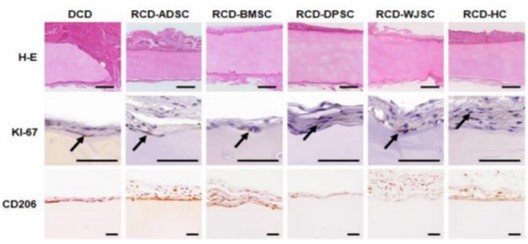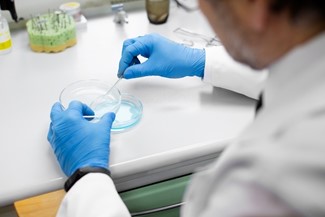The human articular cartilage has limited self-regeneration capacity due to the low proliferation capability of cartilage cells and the lack of vascular supply to this tissue. For this reason, cartilage damage is a therapeutic challenge, and cartilage repair is typically associated to the formation of a fibrocartilage tissue that is not able to mimic the properties of the original cartilage. Several biomaterials can be used to improve human cartilage regeneration, although an ideal product is still in need, and active research is being conducted in this field, including a decellularized tissue-based strategy.
Researchers from the University of Granada (UGR) have developed a novel biomaterial for cartilage regeneration based on decellularized sturgeon cartilage that can be used as a scaffold for cartilage regeneration.
A combined chemical and enzymatic protocol applied to decellularization of the sturgeon cartilage has been developed. Application of this protocol was able to remove all cells from the tissue, while most components of the cartilage extracellular matrix (ECM) were properly preserved. Previous research showed that ECM proteins are highly conserved among species, suggesting that these decellularized scaffolds could be applied to a different organism. In addition, maintaining the native ECM environment facilitates cell growth and viability. As a result, the decellularized cartilage discs obtained can be applied directly to tissues that need to be repaired. The results demonstrated that the scaffold acts as a successful host for both stem cells and differentiated cells.
Properties and benefits have been thoroughly tested with different in vitro and in vivo assays. The results of biosafety studies confirmed the in vivo biocompatibility of decellularized and recellularized cartilages in mice.
Benefits:
- The decellularization method allows the preservation of the natural cartilage components, including the conservation of native ECM, which promotes cell growth and viability.
- High biocompatibility. In vitro and in vivo assays demonstrated its potential efficacy without adverse reactions.
- The biomaterial mimics the natural cartilage environment in in vivo assays, which benefits cartilage regeneration and healing.
- Potential use as a pharmaceutical vehicle for the administration of a therapeutic agent delivered in situ to the patient.
- Highly available and versatile raw material.

The represented institution is looking for a collaboration that leads to commercial exploitation of the presented invention.
Institution: Universidad de Granada.
TRL: 3-4
Protection status: Spanish Patent Application
Contact: Noelia Mas / noelia@viromii.com

